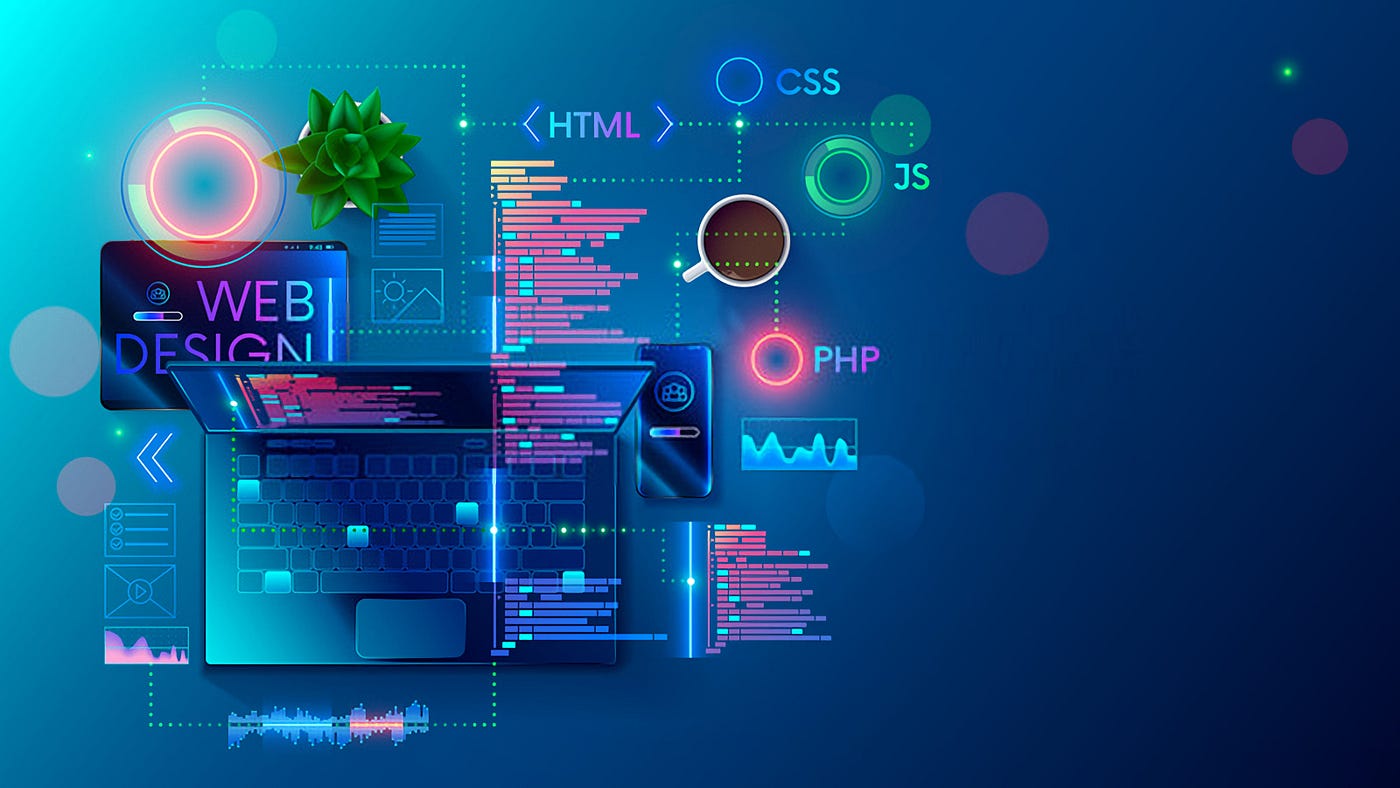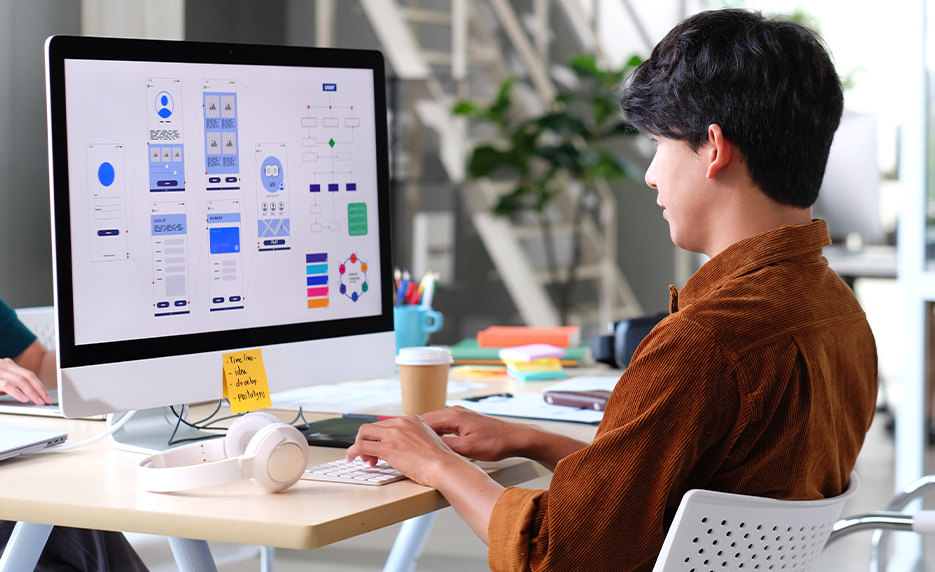All Categories
Featured
Table of Contents
- – What Is Web Design? - Interaction Design Found...
- – Basics Of Web Development & Coding Specializa...
- – What Is Web Design? The Ultimate Guide To Web...
- – $899 - Custom Mobile Friendly Website Design ...
- – St Louis Seo Company - St Louis Web Design An...
- – What Is Web Design? - Interaction Design Foun...
- – Indianapolis Web Design And Digital Marketin...
- – Minneapolis Web Design - 100+ Five Star Revi...
- – Web Design Courses & Tutorials - Codecademy ...
- – Google Web Designer - Home Tips and Tricks:
- – Ciw Web Design Series Tips and Tricks:
What Is Web Design? - Interaction Design Foundation (Ixdf) Tips and Tricks:
Quick summary Usability and the utility, not the visual style, identify the success or failure of a website. Given that the visitor of the page is the only person who clicks the mouse and therefore chooses whatever, user-centric style has actually developed as a standard approach for successful and profit-oriented website design - web design frederick md.
and the energy, not the visual style, determine the success or failure of a website. Given that the visitor of the page is the only individual who clicks the mouse and for that reason decides everything, user-centric style has ended up being a standard technique for effective and profit-oriented website design. After all, if users can't use a feature, it may too not exist.
g. where the search box must be positioned) as it has actually currently been carried out in a variety of short articles; rather we focus on the methods which, used properly, can result in more sophisticated design decisions and simplify the process of viewing provided information. Please see that you may be thinking about the usability-related short articles we have actually released before: Concepts Of Great Website Style And Efficient Web Style Standards, In order to utilize the principles appropriately we initially require to understand how users interact with websites, how they think and what are the fundamental patterns of users' habits.
Basics Of Web Development & Coding Specialization - Coursera Tips and Tricks:
Visitors glimpse at each brand-new page, scan a few of the text, and click on the first link that captures their interest or slightly looks like the thing they're trying to find. In reality, there are large parts of the page they don't even look at. The majority of users search for something intriguing (or useful) and clickable; as soon as some promising candidates are discovered, users click.
If a page supplies users with premium content, they want to jeopardize the content with advertisements and the style of the site. This is the reason that not-that-well-designed sites with top quality content get a lot of traffic over years. Material is more vital than the design which supports it.

Users do not check out, they scan. Notice how "hot" areas abrupt in the middle of sentences. This is common for the scanning procedure. Very basic principle: If a site isn't able to satisfy users' expectations, then designer stopped working to get his job done correctly and the business loses money. The greater is the cognitive load and the less instinctive is the navigation, the more ready are users to leave the website and look for alternatives.
What Is Web Design? The Ultimate Guide To Website Design ... Tips and Tricks:
Neither do they scan webpage in a linear style, going sequentially from one site section to another one. Rather users satisfice; they pick the first affordable choice. As quickly as they find a link that appears like it may result in the goal, there is a really good chance that it will be instantly clicked.
It doesn't matter to us if we understand how things work, as long as we can use them. If your audience is going to act like you're designing signboard, then style excellent billboards." Users want to have the ability to control their browser and rely on the consistent information presentation throughout the site.
If the navigation and site architecture aren't intuitive, the number of enigma grows and makes it harder for users to comprehend how the system works and how to get from point A to point B. A clear structure, moderate visual hints and easily recognizable links can assist users to discover their path to their objective.
$899 - Custom Mobile Friendly Website Design By Go Web ... Tips and Tricks:
Because users tend to explore sites according to the "F"-pattern, these 3 declarations would be the first components users will see on the page once it is packed. The design itself is easy and instinctive, to comprehend what the page is about the user requires to browse for the response.
Once you've attained this, you can communicate why the system is beneficial and how users can gain from it. Individuals will not use your website if they can't find their way around it. 2. Do Not Squander Users' Patience, In every job when you are going to provide your visitors some service or tool, attempt to keep your user requirements minimal.
First-time visitors want to, not filling long web forms for an account they may never ever utilize in the future. Let users check out the website and find your services without forcing them into sharing private information. It's not sensible to force users to get in an email address to evaluate the feature.
St Louis Seo Company - St Louis Web Design And Internet ... Tips and Tricks:
And that's what you want your users to feel on your web site. The registration can be done in less than 30 seconds as the form has horizontal orientation, the user doesn't even need to scroll the page.
A user registration alone is adequate of an obstacle to user navigation to reduce inbound traffic. 3. Manage To Focus Users' Attention, As websites provide both static and dynamic content, some aspects of the interface draw in attention more than others do. Clearly, images are more attractive than the text simply as the sentences marked as vibrant are more appealing than plain text.
Focusing users' attention to particular areas of the website with a moderate usage of visual elements can help your visitors to get from point A to point B without thinking about how it in fact is supposed to be done. The less enigma visitors have, the they have and the more trust they can establish towards the business the site represents.
What Is Web Design? - Interaction Design Foundation (Ixdf) Tips and Tricks:
4. Make Every Effort For Function Exposure, Modern website design are generally slammed due to their method of assisting users with visually appealing 1-2-3-done-steps, big buttons with visual impacts and so on. From the style point of view these components in fact aren't a bad thing. On the contrary, such as they lead the visitors through the site material in an extremely basic and user-friendly way.
The site has 9 primary navigation options which show up at the very first glimpse. The option of colors might be too light. is a basic principle of effective interface style. It does not really matter how this is attained. What matters is that the material is well-understood and visitors feel comfortable with the way they communicate with the system.
com gets straight to the point. No charming words, no overemphasized declarations. Instead a cost: just what visitors are trying to find. An ideal option for efficient writing is touse short and concise expressions (come to the point as quickly as possible), use scannable design (categorize the material, utilize numerous heading levels, use visual elements and bulleted lists which break the flow of consistent text blocks), use plain and unbiased language (a promo does not need to seem like ad; offer your users some sensible and unbiased reason they ought to use your service or stay on your site)6.
Indianapolis Web Design And Digital Marketing Agency Tips and Tricks:
Users are hardly ever on a site to delight in the style; furthermore, most of the times they are trying to find the details despite the style - web design frederick md. Pursue simpleness rather of complexity. From the visitors' perspective, the best website design is a pure text, with no advertisements or additional content obstructs matching exactly the question visitors utilized or the material they have actually been trying to find.
Finch plainly provides the info about the website and offers visitors an option of choices without overcrowding them with unnecessary content. Not only does it help to for the visitors, however it makes it possible to view the info provided on the screen.
Complex structures are harder to check out, scan, examine and deal with. If you have the option in between separating two style sections by a noticeable line or by some whitespace, it's typically much better to utilize the whitespace solution. (Simon's Law): the better you manage to provide users with a sense of visual hierarchy, the much easier your material will be to perceive.
Minneapolis Web Design - 100+ Five Star Reviews - Seo ... Tips and Tricks:
The same conventions and rules ought to be applied to all elements.: do the most with the least amount of hints and visual elements. Clarity: all components ought to be designed so their significance is not ambiguous.
Conventions Are Our Good friends, Standard style of website components doesn't result in a dull web website. In reality, as they decrease the discovering curve, the need to find out how things work. It would be a functionality nightmare if all sites had various visual discussion of RSS-feeds. That's not that different from our regular life where we tend to get used to fundamental principles of how we arrange information (folders) or do shopping (placement of items).
comprehend what they're anticipating from a website navigation, text structure, search positioning etc. A case in point from use sessions is to translate the page in Japanese (presuming your web users don't know Japanese, e. g. with Babelfish) and provide your usability testers with a task to find something in the page of different language.
Web Design Courses & Tutorials - Codecademy Tips and Tricks:
Steve Krug recommends that it's much better to, however take advantages of conventions when you don't. 10. Test Early, Test Frequently, This so-called TETO-principle should be used to every website design job as use tests often supply into considerable issues and concerns connected to an offered layout. Test not too late, not insufficient and not for the wrong factors.
Some crucial indicate remember: according to Steve Krug, and screening one user early in the project is much better than testing 50 near the end. Accoring to Boehm's very first law, mistakes are most regular during requirements and design activities and are the more expensive the later they are gotten rid of.
That indicates that you develop something, test it, repair it and after that check it once again. There might be issues which have not been discovered throughout the very first round as users were almost obstructed by other problems. use tests. Either you'll be indicated the issues you have or you'll be pointed to the lack of major design defects which is in both cases a beneficial insight for your task.
Google Web Designer - Home Tips and Tricks:

This holds for designers too. After you have actually dealt with a site for couple of weeks, you can't observe it from a fresh point of view anymore. You understand how it is constructed and therefore you understand precisely how it works you have the wisdom independent testers and visitors of your website wouldn't have.
It can be connected to other areas such as graphic design, user experience, and multimedia arts, but is more aptly seen from a technological standpoint. It has ended up being a large part of individuals's everyday lives. It is hard to think of the Web without animated graphics, various styles of typography, background, videos and music.

During 1991 to 1993 the Web was born. Text-only pages might be viewed using a simple line-mode internet browser. In 1993 Marc Andreessen and Eric Bina, developed the Mosaic browser. At the time there were several browsers, nevertheless most of them were Unix-based and naturally text heavy. There had been no integrated approach to graphic design aspects such as images or sounds.
Ciw Web Design Series Tips and Tricks:
The W3C was created in October 1994 to "lead the Web to its complete potential by developing typical protocols that promote its development and ensure its interoperability." This dissuaded any one company from monopolizing a propriety browser and shows language, which might have altered the impact of the Web as a whole.
As this has occurred the innovation of the web has actually also moved on. There have actually likewise been significant changes in the method individuals use and access the web, and this has actually changed how websites are developed.
Learn more about Lovell Media Group LLC or TrainACETable of Contents
- – What Is Web Design? - Interaction Design Found...
- – Basics Of Web Development & Coding Specializa...
- – What Is Web Design? The Ultimate Guide To Web...
- – $899 - Custom Mobile Friendly Website Design ...
- – St Louis Seo Company - St Louis Web Design An...
- – What Is Web Design? - Interaction Design Foun...
- – Indianapolis Web Design And Digital Marketin...
- – Minneapolis Web Design - 100+ Five Star Revi...
- – Web Design Courses & Tutorials - Codecademy ...
- – Google Web Designer - Home Tips and Tricks:
- – Ciw Web Design Series Tips and Tricks:
Latest Posts
Web Design And Applications - W3c Tips and Tricks:
Web Design Blog - Webdesigner Depot Webdesigner Depot Tips and Tricks:
53 Web Design Tools To Help You Work Smarter In 2022 Tips and Tricks:
More
Latest Posts
Web Design And Applications - W3c Tips and Tricks:
Web Design Blog - Webdesigner Depot Webdesigner Depot Tips and Tricks:
53 Web Design Tools To Help You Work Smarter In 2022 Tips and Tricks: